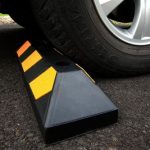Applications of Rubber Speed Bumps
Residential areas
Rubber speed bumps are an excellent choice for residential areas due to their versatility and effectiveness. These speed bumps are designed to slow down vehicles and ensure the safety of pedestrians and residents. They can be easily installed on residential streets, driveways, and parking lots, providing a reliable solution for controlling speed. Rubber speed bumps are also durable and weather-resistant, making them suitable for long-term use in various weather conditions. Additionally, they are highly visible with reflective markings, enhancing their effectiveness during both day and night. Overall, rubber speed bumps are an ideal option for residential areas, promoting safer and calmer traffic flow.
School zones
Rubber speed bumps are an essential tool for ensuring the safety of school zones. With their versatility and effectiveness, these speed bumps help to control and regulate the speed of vehicles passing through school areas. By slowing down the traffic, rubber speed bumps create a safer environment for students, teachers, and pedestrians. They serve as a visual reminder for drivers to be cautious and attentive, reducing the risk of accidents and promoting a sense of responsibility on the road. Additionally, rubber speed bumps are designed to withstand heavy traffic and adverse weather conditions, making them a reliable choice for school zones. Overall, the use of rubber speed bumps in school zones is crucial in maintaining a secure and protected environment for everyone involved.
Parking lots
Parking lots are one of the most common settings where rubber speed bumps are used. These speed bumps are designed to slow down vehicles and ensure the safety of pedestrians and other drivers. In parking lots, rubber speed bumps are particularly effective in controlling the speed of vehicles and preventing accidents. They are often installed near entrances, exits, and pedestrian crossings to alert drivers to slow down and be cautious. The versatility of rubber speed bumps makes them suitable for various types of parking lots, including commercial parking lots, residential complexes, and public parking areas. Whether it’s a busy shopping center or a quiet residential neighborhood, rubber speed bumps play a crucial role in maintaining order and safety in parking lots.
Installation and Maintenance
Proper installation guidelines
Proper installation guidelines are crucial to ensure the effectiveness and longevity of rubber speed bumps. Firstly, it is important to choose the right location for installation. Speed bumps should be placed in areas where there is a need to control vehicle speed, such as near schools, residential areas, or parking lots. Additionally, the surface where the speed bumps will be installed should be clean and free from any debris or obstructions. This will ensure a smooth and secure installation. Furthermore, it is essential to follow the manufacturer’s instructions and guidelines when installing rubber speed bumps. This includes properly securing the speed bumps to the ground using the recommended fasteners. By following these proper installation guidelines, the rubber speed bumps will effectively serve their purpose in various settings, promoting safety and traffic control.
Regular inspection and repairs
Regular inspection and repairs are crucial when it comes to maintaining the effectiveness and safety of rubber speed bumps. These traffic calming devices are subjected to constant wear and tear due to the heavy vehicles that pass over them. Therefore, it is essential to conduct regular inspections to identify any signs of damage or deterioration. This includes checking for cracks, loose bolts, or any other issues that may compromise the functionality of the speed bumps. Prompt repairs should be carried out to address any issues found during the inspection. By ensuring regular inspection and repairs, the longevity and performance of rubber speed bumps can be maximized, providing a reliable solution for traffic management in various settings.
Longevity of rubber speed bumps
Rubber speed bumps have gained popularity in various settings due to their versatility. One aspect that sets them apart is their longevity. Unlike traditional asphalt or concrete speed bumps, rubber speed bumps are designed to withstand heavy traffic and harsh weather conditions. They are made from durable materials that can resist cracking, fading, and deterioration over time. This makes them a cost-effective option for long-term use. Whether installed in residential areas, parking lots, or industrial sites, rubber speed bumps can maintain their effectiveness and functionality for years to come.
Comparison with Other Speed Control Measures
Speed humps vs. speed bumps
Speed humps and speed bumps are two common traffic calming devices used to slow down vehicles in various settings. While they serve a similar purpose, there are some key differences between the two. Speed humps are typically larger and wider than speed bumps, and they are designed to slow down vehicles to a speed of around 10-20 mph. They are often used in residential areas, parking lots, and school zones. On the other hand, speed bumps are smaller and more abrupt, causing vehicles to slow down to a speed of around 5-10 mph. They are commonly found in areas where a lower speed limit is required, such as near pedestrian crossings or in front of driveways. Both speed humps and speed bumps are effective in reducing vehicle speed and improving safety, but the choice between the two depends on the specific needs and characteristics of the location.
Concrete speed bumps vs. rubber speed bumps
When it comes to choosing between concrete speed bumps and rubber speed bumps, there are several factors to consider. Concrete speed bumps are known for their durability and long lifespan, making them a popular choice for high-traffic areas. However, they can be more expensive to install and may cause more damage to vehicles if not properly maintained. On the other hand, rubber speed bumps are more flexible and can be easily installed or removed as needed. They are also less likely to cause damage to vehicles and provide a smoother ride. Additionally, rubber speed bumps are often more cost-effective, making them a preferred option for many settings. Overall, the choice between concrete and rubber speed bumps depends on the specific needs and requirements of the location.
Advantages of rubber speed bumps
Rubber speed bumps offer several advantages in various settings. One of the key benefits is their versatility. These speed bumps can be installed in a wide range of locations, including residential areas, parking lots, and industrial sites. They are highly effective in controlling and reducing vehicle speed, ensuring the safety of pedestrians and drivers alike. Additionally, rubber speed bumps are durable and weather-resistant, making them suitable for both indoor and outdoor use. Their flexible and modular design allows for easy installation and customization to fit different road widths and traffic requirements. Overall, the advantages of rubber speed bumps make them an excellent choice for enhancing traffic safety and managing speed in different settings.
Conclusion
Future potential of rubber speed bumps
Rubber speed bumps have already proven to be highly effective in controlling and reducing vehicle speeds in various settings. However, their future potential goes beyond just traffic calming. With advancements in technology and materials, rubber speed bumps can be designed to have additional features such as integrated sensors and LED lights. These features can provide valuable data on traffic patterns and enhance visibility, making them even more versatile in different settings. Furthermore, the use of eco-friendly materials in the production of rubber speed bumps can contribute to sustainability efforts. As cities and communities continue to prioritize safety and sustainability, the future of rubber speed bumps looks promising, with the potential to revolutionize traffic management and create safer and greener environments.
Next Steps To explore the wide range of applications and benefits of rubber Speed Bumps Company, it is essential to invest in high-quality products that guarantee durability and effectiveness. Unimat Industries offers a comprehensive selection of top-notch rubber speed bumps that are designed to meet various needs and requirements. Whether you are looking to enhance safety in a residential area, control traffic in a parking lot, or improve pedestrian safety in a school zone, Unimat Industries has the perfect solution for you.







